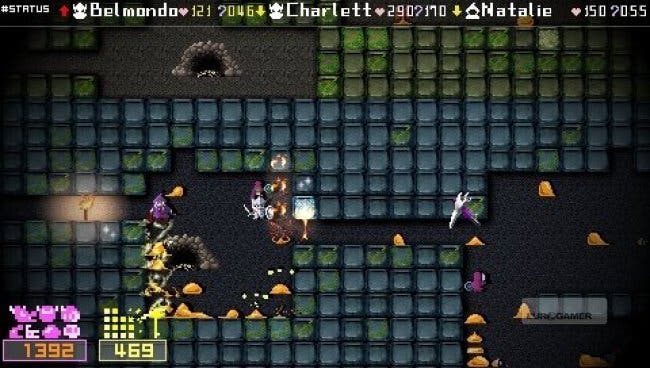Holy Invasion of Privacy, Badman! What Did I Do to Deserve This?
Dwarf Fortress.
Who knows what crease in Nippon Ichi's psyche continually draws the developer back to the anti-hero. Perhaps the scriptwriters were picked on at school, or maybe the CEO was never any good at team sports. Whatever the reason, from Disgaea to Makai Kingdom, the studio has rarely cast players as anything but a demonic villain hell-bent on the destruction of everything good and respectable. It's more than a decision to dodge the comfortable fantasy cliché of knights in shining valour; Nippon Ichi understands the perverse delight that comes from surrendering to absolute corruption, of assuming the role of an amiable hyper-villain, especially one hapless enough to be mocked and glorified in equal measure.
Badman - as we'll refer to it in shorthand, since our time on this page is limited and a tortuously long game title is a joke that tickles only once - is no different, at least in terms of its theme. You play as the God of Destruction, a supreme, disembodied entity charged with designing a labyrinthine underground lair, complete with its own devilish ecosystem, ready to entrap and destroy any would-be adventurers who enters. It's a good premise that clothes a framework which defies simple classification. Part tower defence, part-architecture-'em-up, part ant-farm biology class, it draws from a great many traditions, seasoning its hotch-potch systems with an 8-bit aesthetic that hammers home the premise's subversion of RPG tradition.
Your only mode of interaction with the gameworld is via a pickaxe, primarily used for hollowing out the cave system that forms an underground fortress for your as-yet-unborn horde to roam. You have a few minutes to make preparations, digging chambers and tunnels like you're on a Dwarf Fortress speed-run, before one or more archetypal RPG heroes storms your dungeon with a view to murdering your minions and carrying off your main disciple, the titular Badman. If they manage to make it out of your dungeon alive, with Badman in tow, the game is over and you need to start again from scratch, in an effort to build a less penetrable fortress and a more sustainable army.

In contrast to most tower defence games, here your defensive units are born from the earth you dig up, rather than purchased with in-game currency. Squares of earth containing nutrients will, once destroyed with your pickaxe, turn into Slimemosses, lowly monster units that wander your dungeon corridors depositing nutrients into the earth around them which can be be used to create yet more Slimemoss. While Slimemoss will attack any intruder to your dungeon, they are weak and easily defeated. However, the Slimemoss, as the creature at the bottom of your dungeon's food chain, is crucial to creating more powerful units and so must be celebrated and nurtured with care.
The more nutrients found in a square of soil the more evolved the creature that will grow from it. As Slimemoss deposit nutrients into the earth around them as they feed and naturally die, so the quality of the soil will increase and you'll be able to add Omnom maggots and Flies to your army, the next tier of creatures in Badman's curious food chain. From these creatures Lizardmen and Liliths will evolve, all the way up to the most powerful unit in the game, the dragon, and so your dungeon's ecosystem grinds into clockwork motion. As the game progresses you also gain access to magic-based creatures, spawned from a different sort of nutrient in the ground, and balancing your army between melee and magic combatants is key to success in its later stages. Much of your time is spent merely managing the population of the dungeon, ensuring that there aren't too few maggots to feed the Lizardmen, or too many magic-based creatures to be able to cope with any melee-weak Heroes that come through the door.


